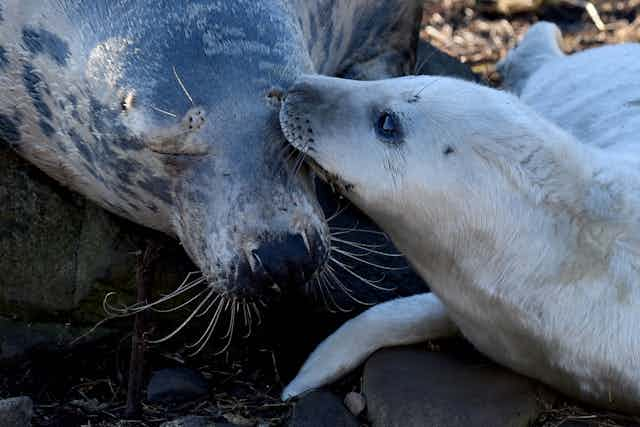Parenthood is a demanding time for many creatures, and all species that take care of their young are highly motivated to ensure their offspring get the best start to life. Infancy is a crucial time for growth and there is enormous pressure on parents to get newborns gaining weight as quickly as possible to ensure healthy development.
Looking after infants so they can thrive in early life without exhausting a parent’s own resources is a difficult balancing act, and we have been studying how mothers and offspring are physiologically linked so that both parties can get the most out of this important time.
Mother-infant dynamics
Best known as the “love” or “cuddle” hormone, oxytocin also influences many other behaviours and biological processes in the body. It is essential for forming bonds with others and behaving socially towards them, and this is true for parents and infants, friends or romantic partners and even pets and their owners.
But oxytocin also affects processes related to energy balance in the body, including appetite regulation and weight changes. If these two areas of the hormone’s functionality are linked, then oxytocin release from bonding and interacting could also be affecting weight changes.
We have been studying wild grey seals in Scotland to help us understand how the oxytocin release, behaviour and energy balance of mothers and infants are connected. Grey seals come on land to breed once a year and stay in a colony while they rear their pups.
They are a great species to study mother-infant dynamics because mothers don’t feed during this time, making it much easier to investigate how they use their energy. The same mothers can also be identified year after year and can be observed over the entire period mothers and pups are together (only 18 days in this species).
Connecting bonded pairs
The first thing we found was that the levels of oxytocin in mothers and pups are linked, with high-oxytocin mothers producing high-oxytocin pups. This happens because oxytocin acts in a positive feedback loop and can stimulate its own release.
Individuals that share a bond are motivated to be together, and the sight, sound and touch of a bonded partner can cause oxytocin release, which in turn leads to more social behaviour between the pair and even more oxytocin release. This can lead to bonded individuals having higher levels of oxytocin in circulation when they are together, which we can use to identify bonded pairs.
Having detected oxytocin levels in seal mothers and pups, we could then establish if there was any relationship to weight changes in the pairs. We found the higher the oxytocin levels in pups, the quicker they put on weight.
This could have happened if these pups simply drank more milk while they were with their mothers. However, the behavioural data showed that across the range of oxytocin values in the pups there was no difference in the total time spent feeding or how often they fed. We also showed there was no increased weight loss for the high oxytocin mothers who were producing the pups with higher weight gain rates. Remarkably, these pups were gaining more weight per day without any additional energetic input from their mothers.

Changing behaviour or physiology?
At present, we don’t know why this is happening, but there are a few possible explanations. There may be behavioural reasons, with oxytocin release reducing behaviours that result in unnecessary energy expenditure. Oxytocin encourages individuals to stay close to each other, even in young seals, and by keeping close to their mothers, high oxytocin pups may spend less energy travelling around the breeding colony, getting into trouble with other seals.
Pups could also be sheltered from the cold Scottish climate while snuggled up to their mothers, reducing the energy needed to keep warm. However, there are also studies showing that manipulating oxytocin levels can cause changes to fat, bone and muscle development, so it is possible that high oxytocin levels in these pups is directly affecting tissue growth.
Understanding the factors affecting infant growth during early life is vital. As oxytocin is found in all mammal species, defining its role linking functional social bonds and optimal weight gain in infants could help us develop interventions for animal husbandry or medical care.
In humans, problems with infant nutrition and development are estimated to cause 45% of deaths in children under five globally. By uncovering the physiology underlying interactions between care-givers and infants, we can better understand connections between positive relationships and health, and ultimately help those that are struggling to thrive during this crucial time.

